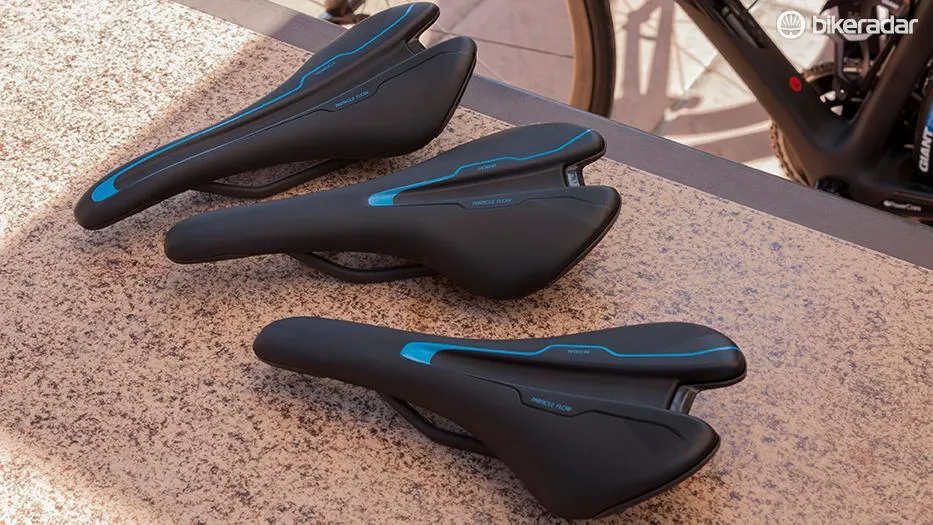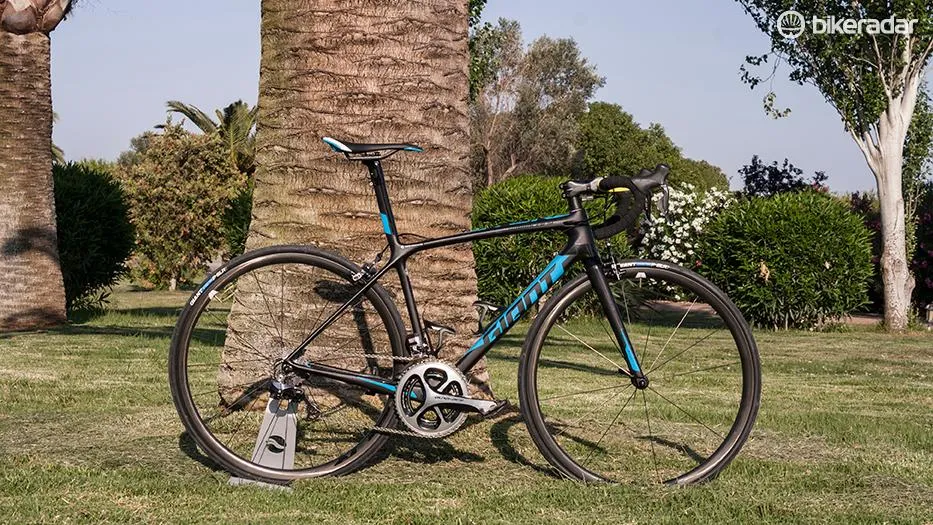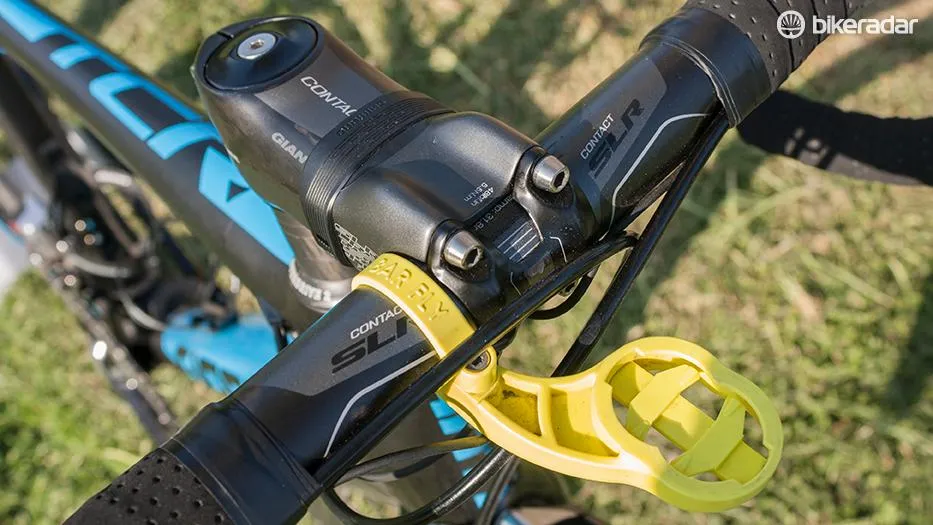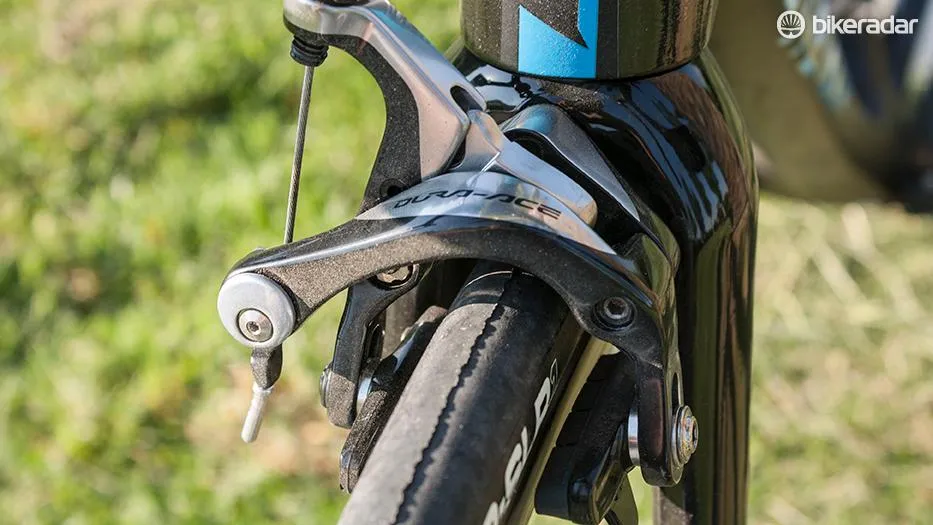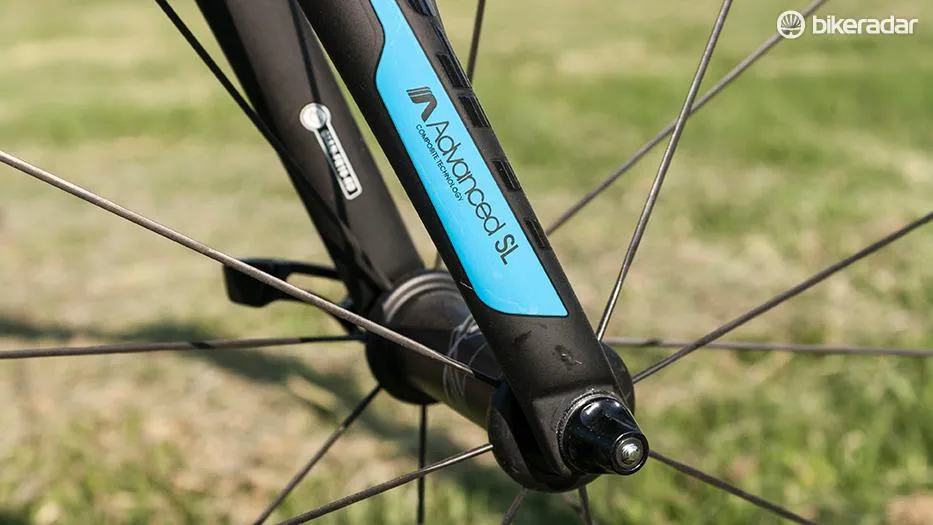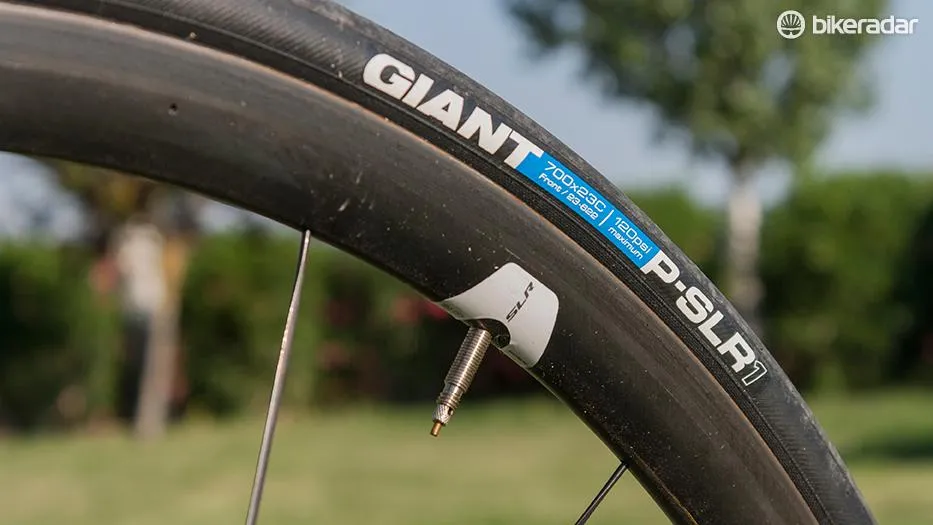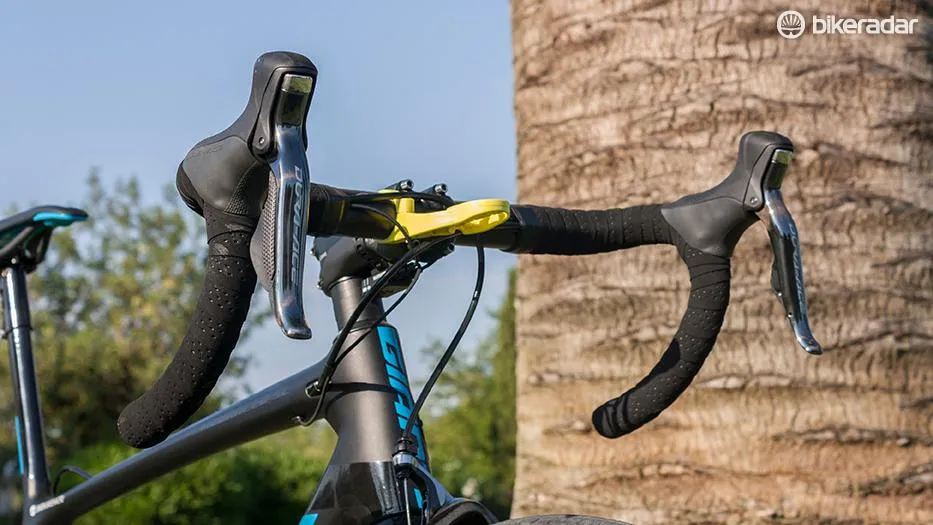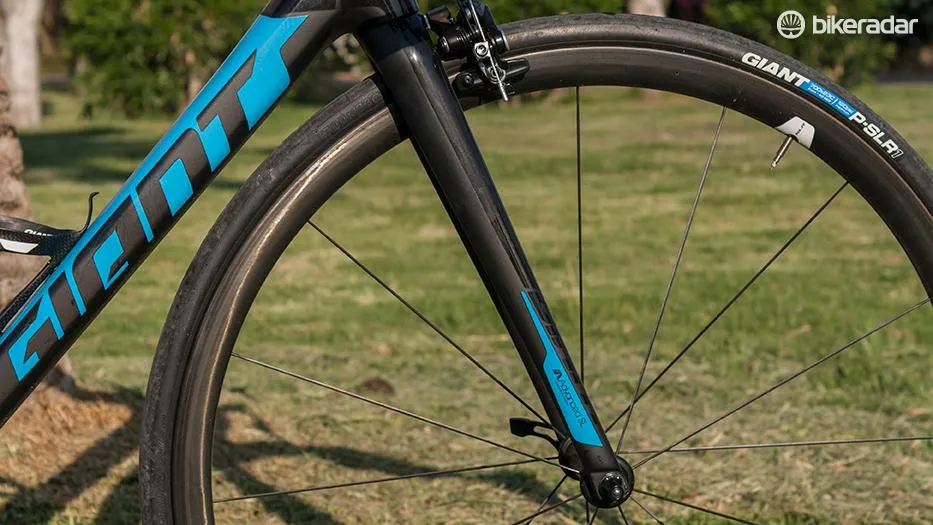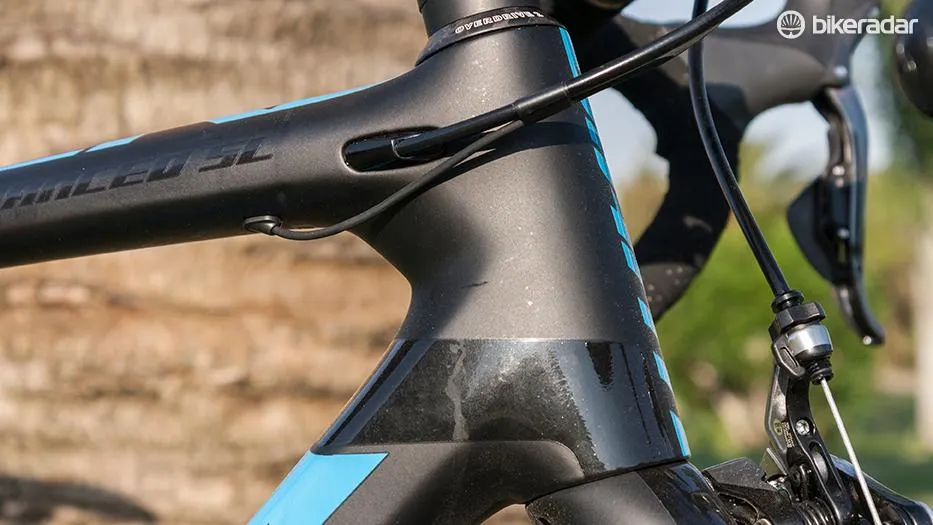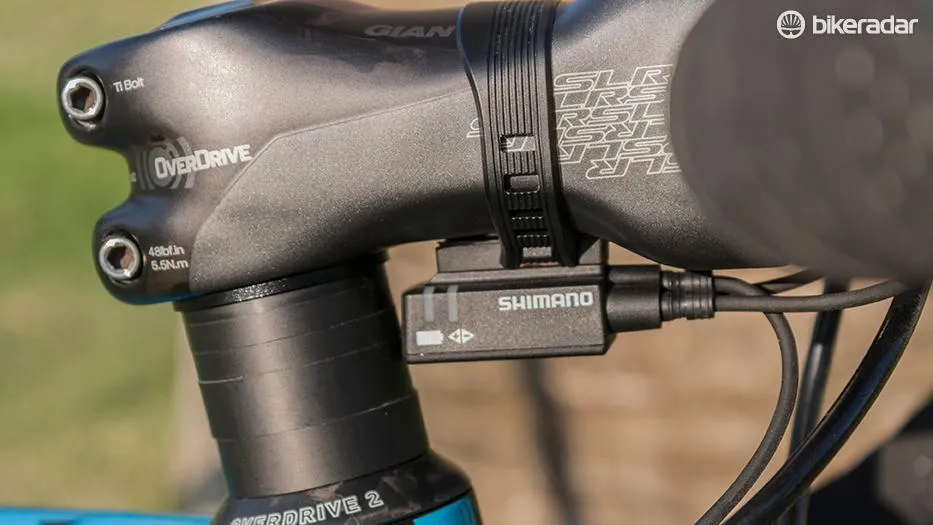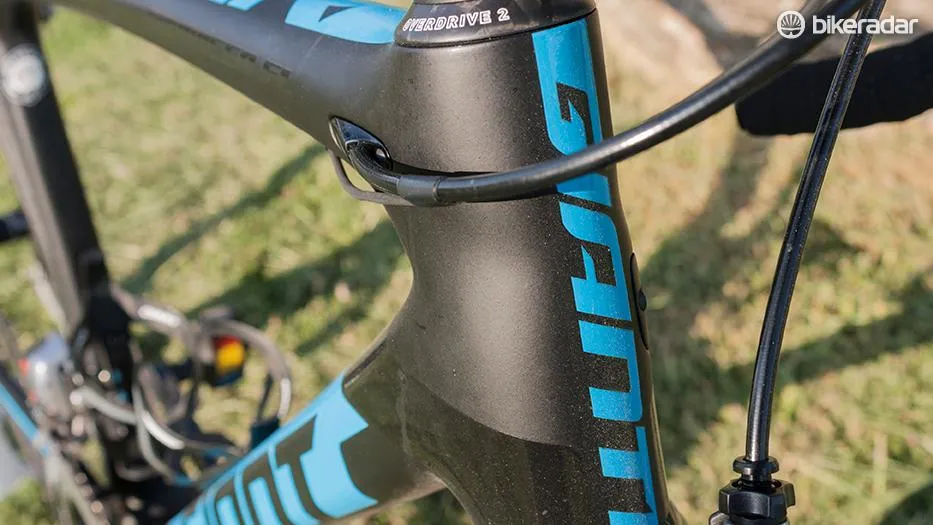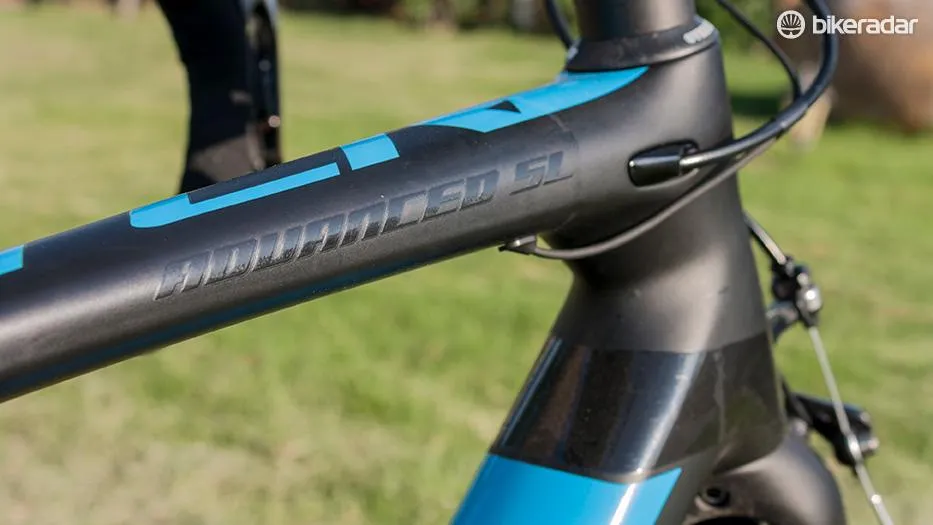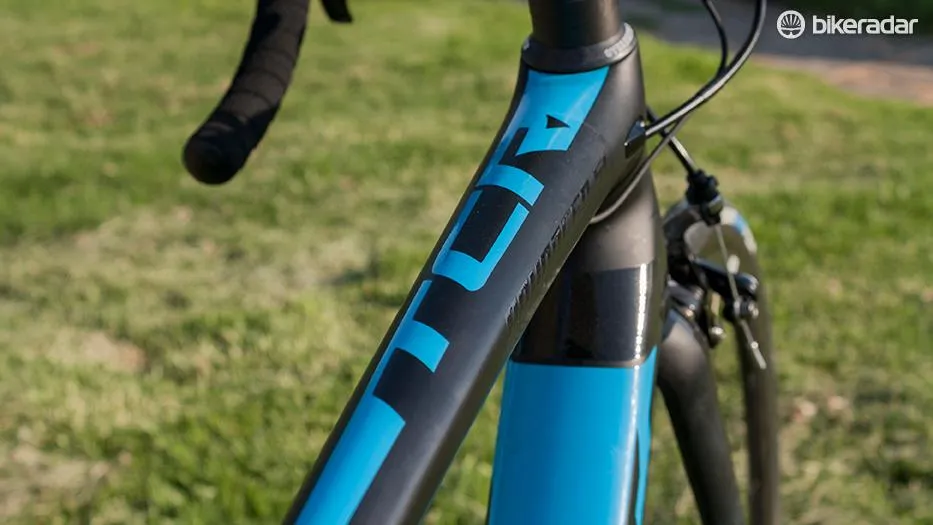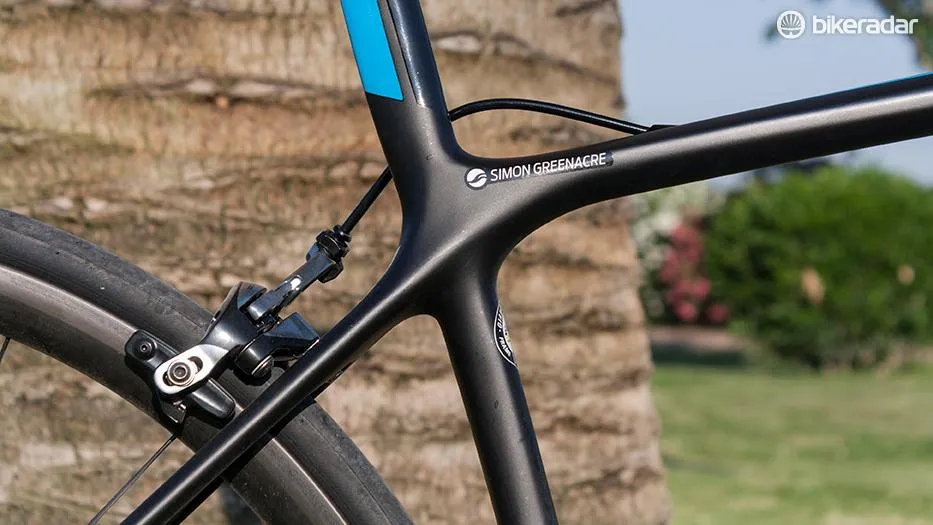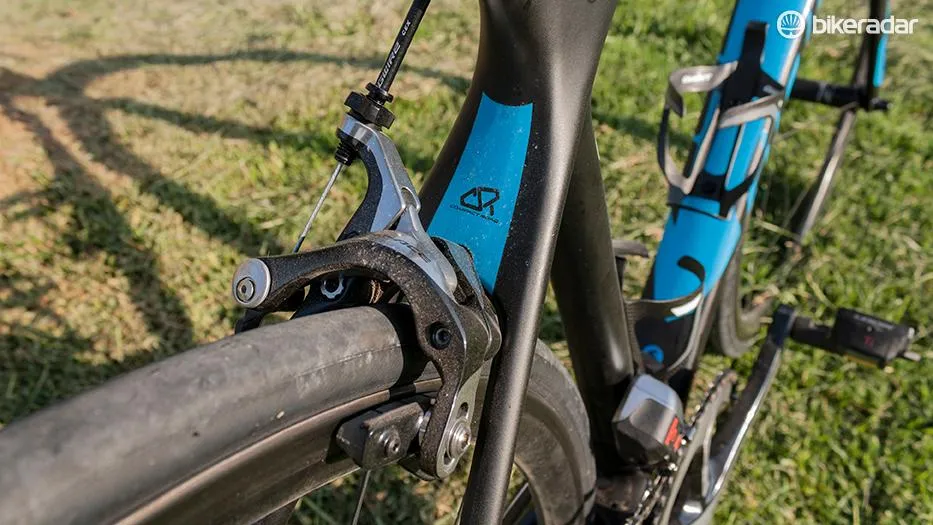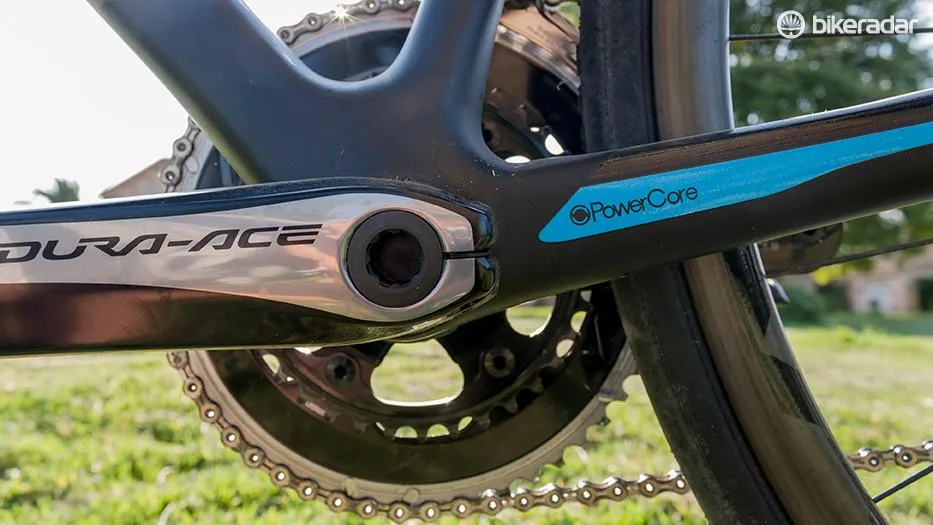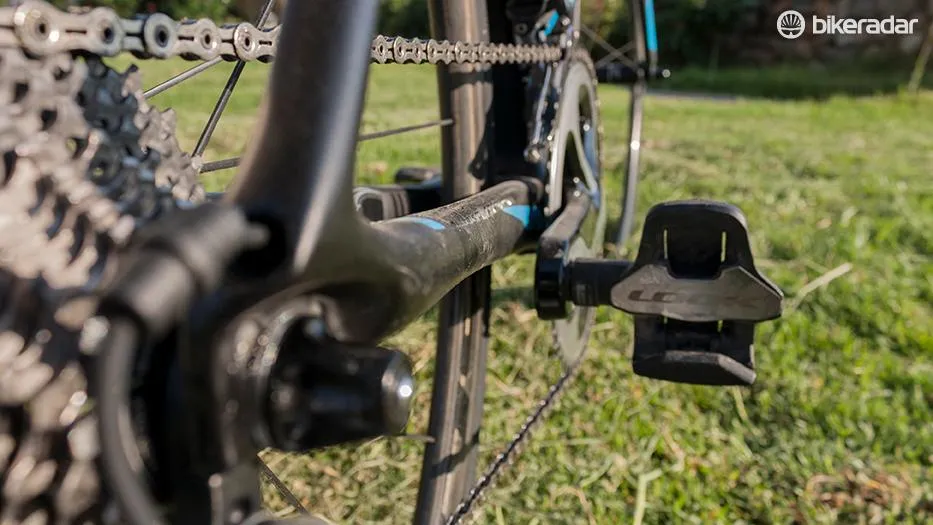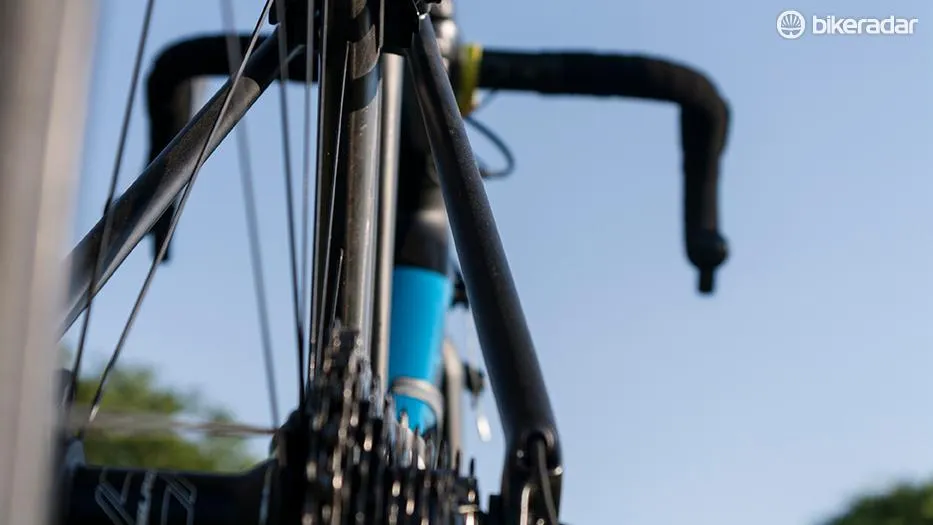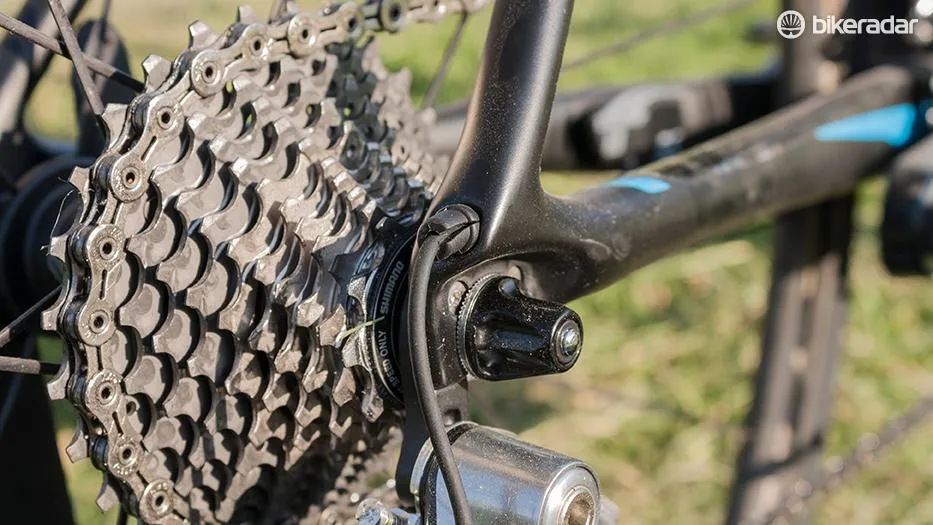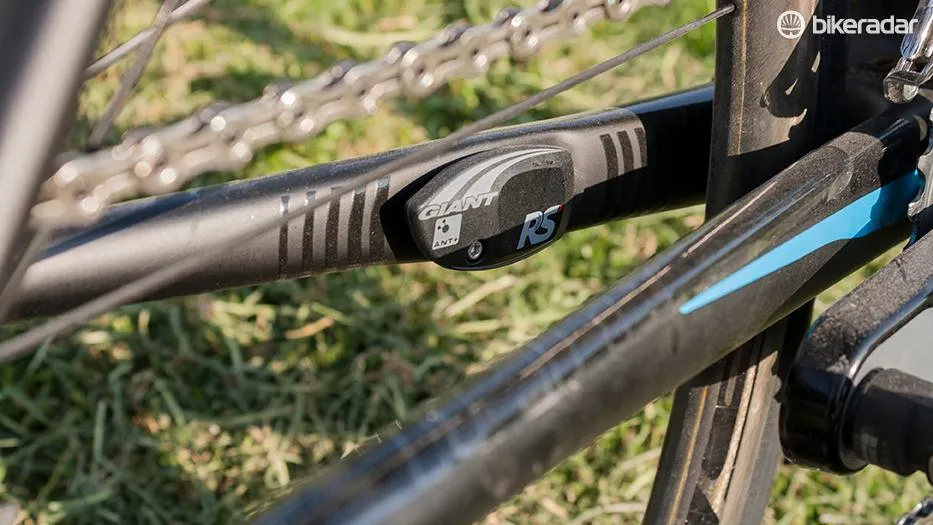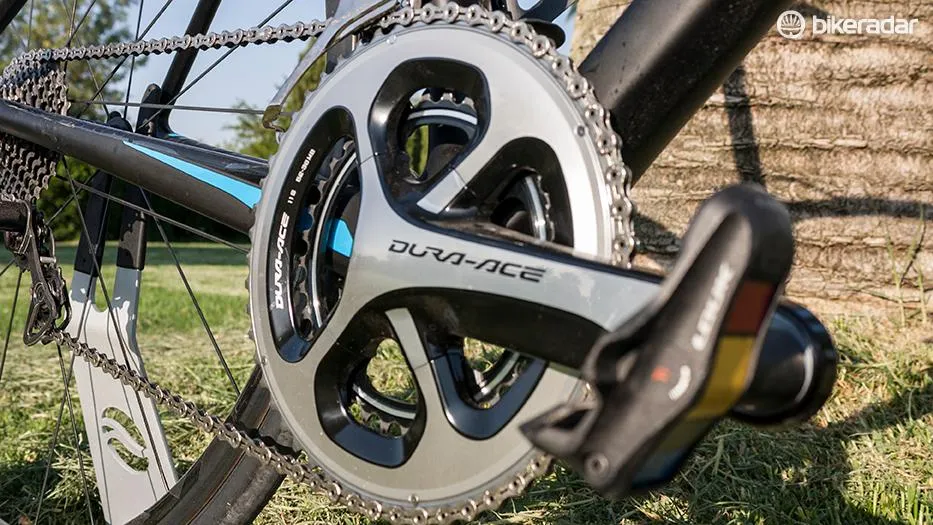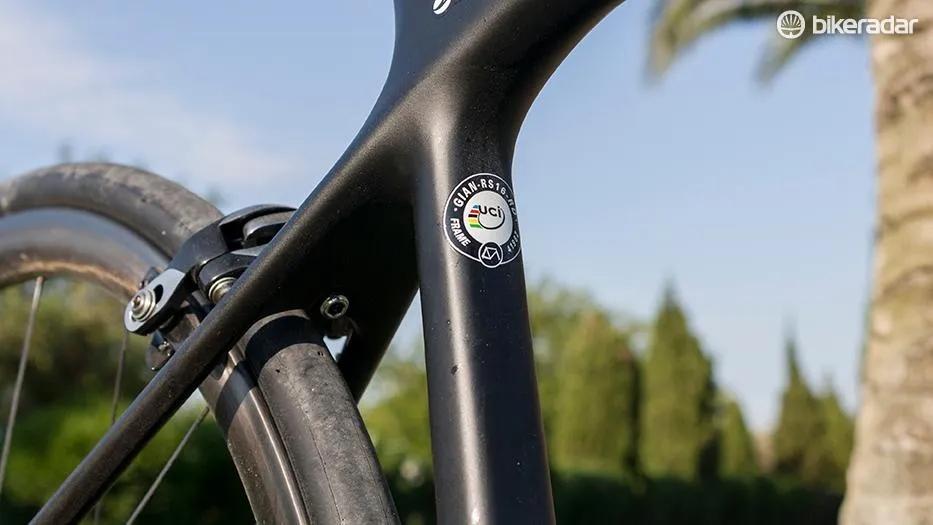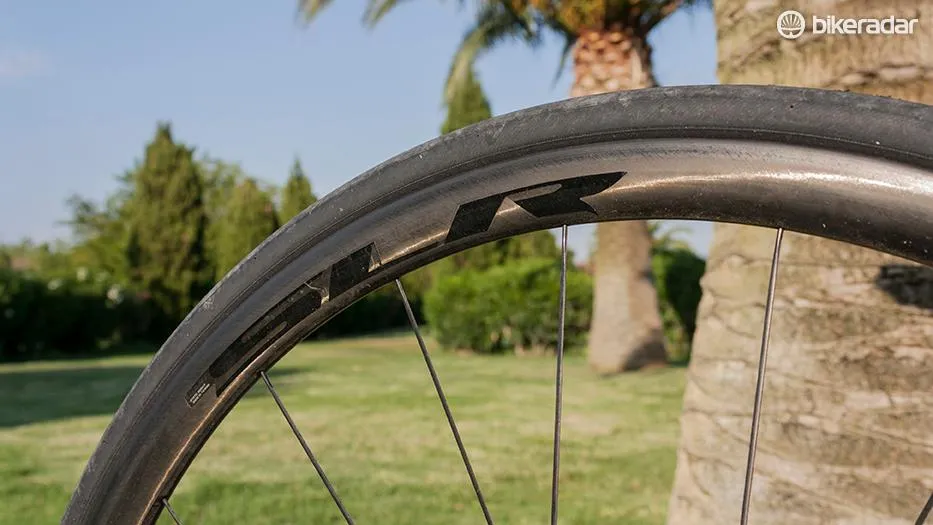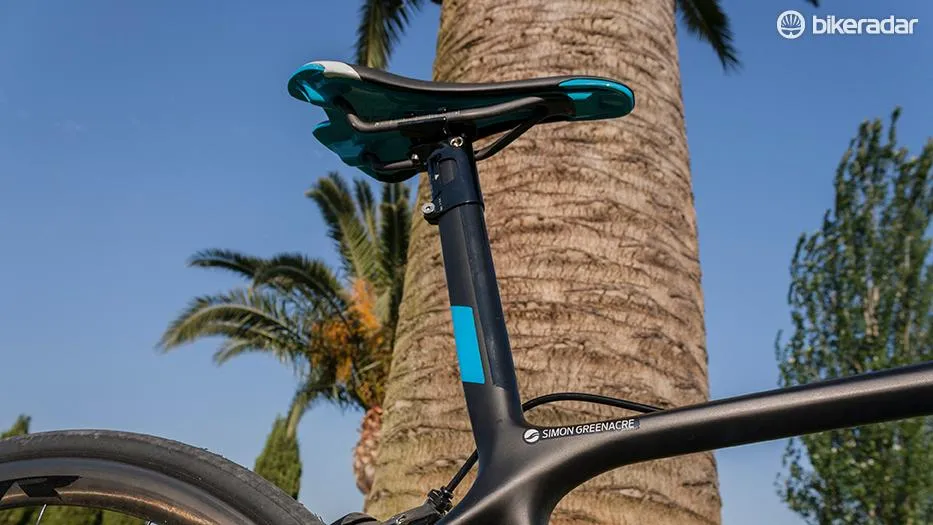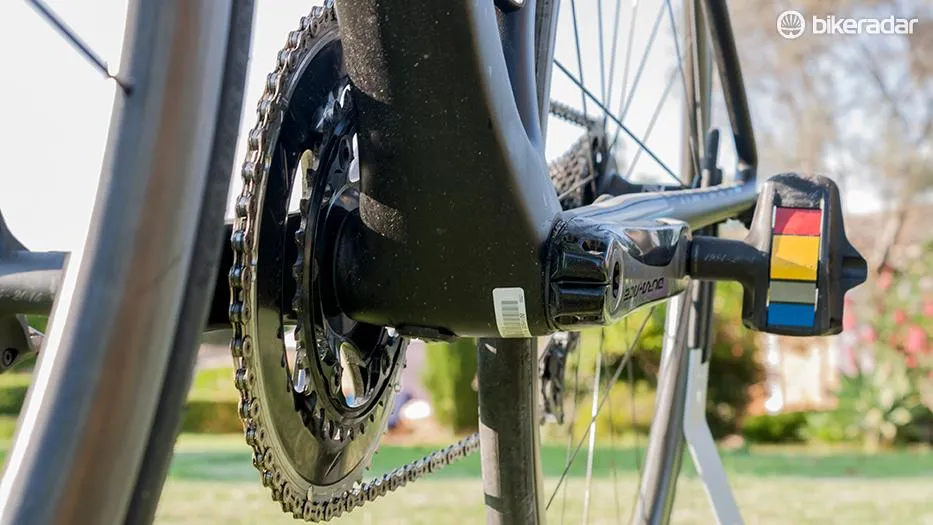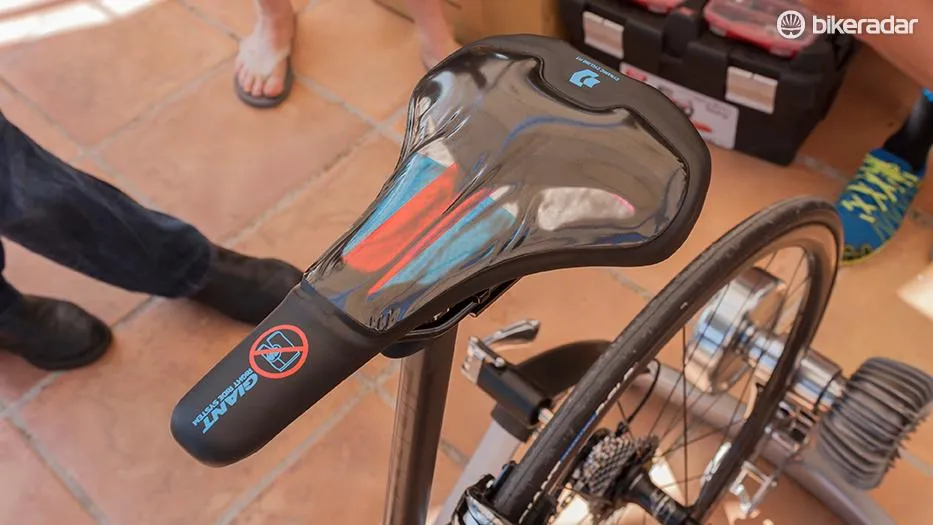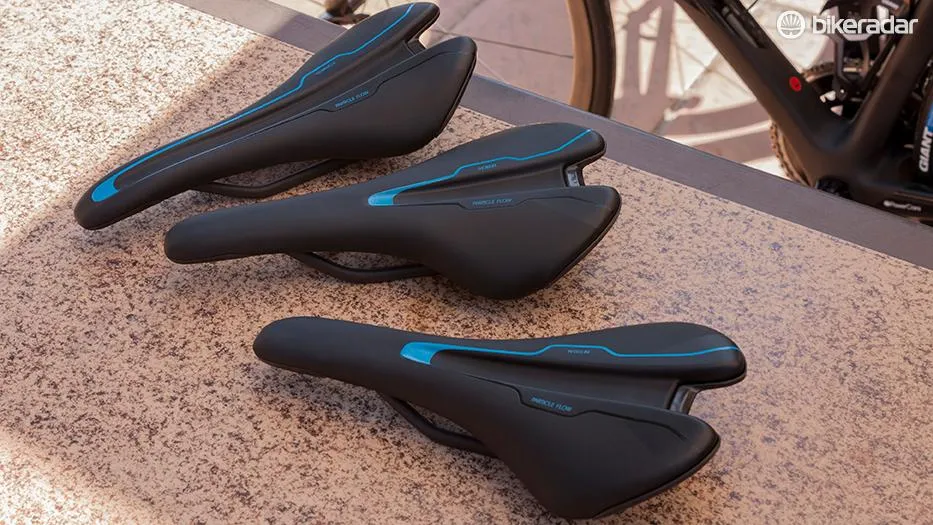For 2016 Giant redesigned the TCR road bike from the ground up with a lighter and torsionally stiffer frame and a lighter fork. Giant will also have new tubeless-ready road wheels and a new line of saddles, complete with a measuring tool for shops in the form of a saddle with pressure-sensitive gel that records your position by changing colour.
While the Propel is Giant's aero machine and the Defy is the endurance platform, TCR is the straight-ahead road race bike. Giant's lead TCR designer Doug Barnett said the three core values behind the TCR redesign were efficiency, handling and race-tuned ride quality.
“When we talk about efficiency we’re talking about how the bike performs in the hands of the guys who push that bike to the limits, the GC athletes who ride in the pro peloton,” Barnett said.
(Claimed) facts and figures
Giant claims the top-end TCR Advanced SL has the highest stiffness-to-weight ratio of any road bike. Barnett said Giant bought samples of all of their competitors’ bikes to test, and the TCR Advanced SL came out 7% stiffer than its closest competitor, the Cervelo R5.
The 2016 TCR Advanced SL frame weighs a claimed 856g. While Giant admitted the Scott Addict SL frame to boast a lower weight of 732g, the company said the Addict SL was the least stiff bike they tested when ranked against race bikes from Cervelo, Specialized, Trek and Cannondale.
Giant developed a new wheel and frameset stiffness test to better understand and quantify how frame and wheels work together, and, unsurprisingly, the TCR Advanced SL came out on top when used with Giant new wheel system (more on that below).
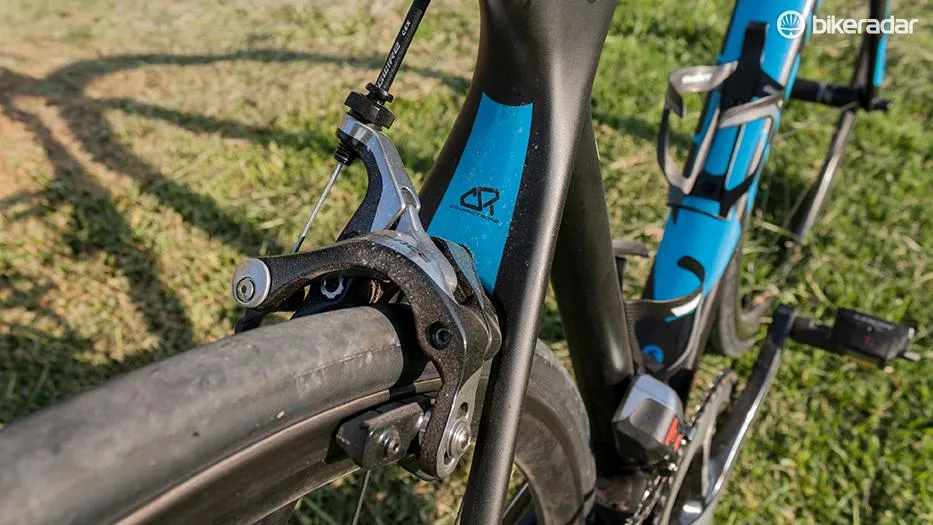
Weight was shaved from the seatstays, seatmast, top tube and down tube
So how have they hit such a claimed stiffness-to-weight sweet spot? Eric Klemm, lead designer on the TCR project, said “the TCR has been slimmed down and refined. From a design point of view, the TCR project is about maximizing what we have to work with.” The new TCR features optimized tube shapes that are the result of Giant’s engineers refining the frameset to allow them to remove excess material. The biggest recipients of this mass cull have been the top tube, down tube, seat mast and seatstays.
You’d think less mass would result in a flexier frame but Giant claims that stiffness has not been affected.
Details across the three-tiered range
There are three bikes in the 2016 TCR range: the top-level Advanced SL, the mid-level Advanced Pro and the Advanced. For each of these three levels, there a further three bikes of varying specification. All share the same frame design, but differ in the the grade of carbon used and the parts selection.
All the TCR bikes have Giant’s MegaDrive down tube, the wide PowerCore bottom bracket with its 86.5mm press-fit shell, asymmetric chainstaysand progressively changing geometry, which means the bike’s characteristics stay the same as the frame size changes. A medium frame has parallel head and seat tube angles of 73 degrees, with a 55cm top tube and a wheelbase of 97.6cm.
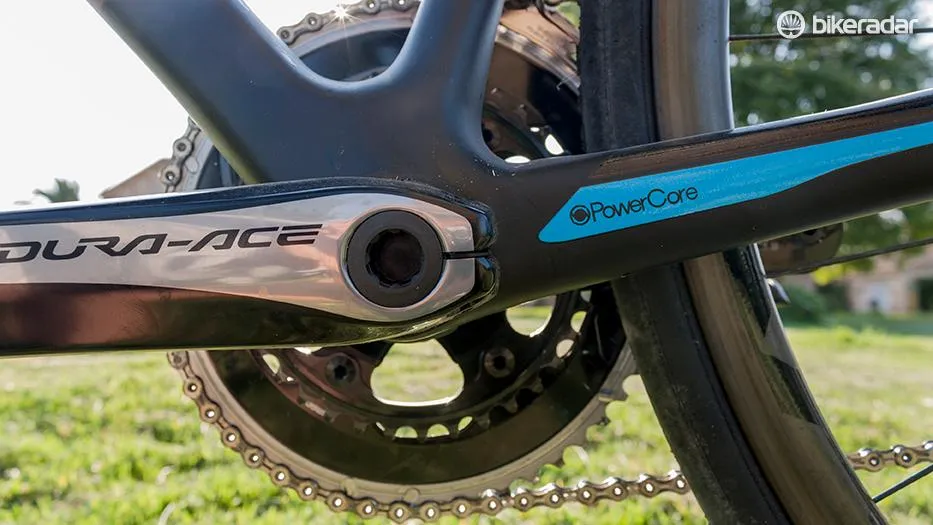
Seemingly every company has a name for its bottom-bracket junction, and Giant is no different
The top-end Advanced SL features hollow carbon dropouts, an integrated seatpost, Giant’s Advanced SL composite carbon and a choice of electric or mechanical Shimano groups.
The Advacned SL and Advanced Pro both have a new full carbon fork that features Giant’s carbon OverDrive2 steerer tube, which weighs a claimed 39g less than the fork on the previous bike. Giant also claim the fork offers improved stiffness thanks to the bottom bearing sitting 2mm higher in the head tube. The aim of this is to transfer some of the torsional force into the frame, making the front end feel stiffer.
Pricing was not immediately available.
Riding impressions
Giant launched the bike on the Spanish island of Mallorca, where we had two days of riding on some incredible roads. We rode the TCR Advanced SLR 0 with 52/36 11-28 Dura-Ace Di2 groupset, carbon cockpit, and Giant’s new wheels and saddle.
There’s no doubting it’s a stiff bike. It feels like the rear of the frame really aids you with moving forwards and during out-of-the-saddle efforts of steep hairpins, it felt like I was getting every last drop out of my leg muscles. The same was noticeable when sprinting, when it felt like my effort through the pedals was being accurately translated into an a instant surge forward. On fast downhill sections, when I turned the cranks harder, I was rewarded with an instant increase in speed. At one point I was drafting a car at just over 40mph and as I mashed the cranks to get past, the frame responded superbly to my aggressive movements as I did my best Kittel impression, violently hauling the front of the bike from side to side.
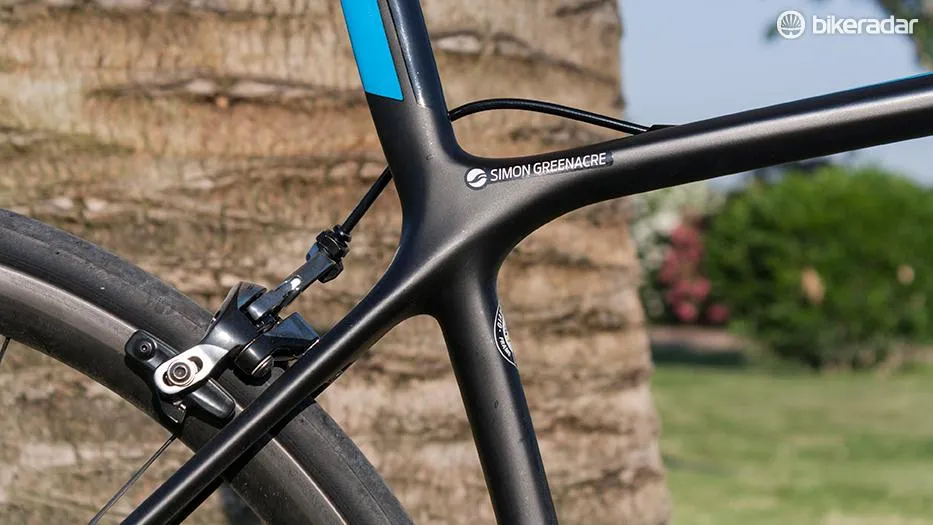
I found the bike to live up to Giant's claims on smooth Mallorca tarmac, but I'm curious how the machine will handle back home on rough UK roads
Giant’s SLR 0 carbon wheels played their part here. As a set, they weigh a claimed 1,335g a pair and undoubtedly make a significant contribution to how light, lively and reactive the TCR feels. But they also provided the only niggle I could find during my rides; the brakes lacked the amount of outright power I desired. The bikes and wheels we were riding were box fresh and on the first day they felt vague and timid. They got better with use and by the end of the trip I was confidently approaching hairpin bends at speed while squeezing the levers for all they were worth. Though the levers ended up feeling good, I couldn’t shake the feeling that they weren’t as powerful as they should be.
For me, the best evidence of the TCR’s stiffness came from the handling, which is superb. The front of the bike is so stiff and communicative that I had to tell myself to calm it down on some of the descents. The front is stiff enough that it was holding any line I chose and was really taking liberties turning the bike in hard and late to see if I could unsettle it. Because the frame, fork and wheels were so unyielding, the only limiting factor was how much grip I could get out of the front tyre - at times I was cornering hard enough that I could feel it starting to protest under the combination of speed, angle and my gusto.
A real world call on comfort will have to come from riding the bike on UK roads. Most of the riding I did in Mallorca was on smooth tarmac, free from potholes and ruts. It was comfortable during a hot 50-mile ride; even though the frame is stiff, it wasn’t trying to smash my fillings out and wasn’t punishing my posterior.
New wheel systems
Giant's new tubeless compatible wheel systems include 30mm and 55m deep wheels, each in three types of construction and price.
Giant’s aim was to create a set of wheels that offer class-leading efficiency from aerodynamics, superb control from the braking surface and stiffness, plus reliability and performance in all conditions.
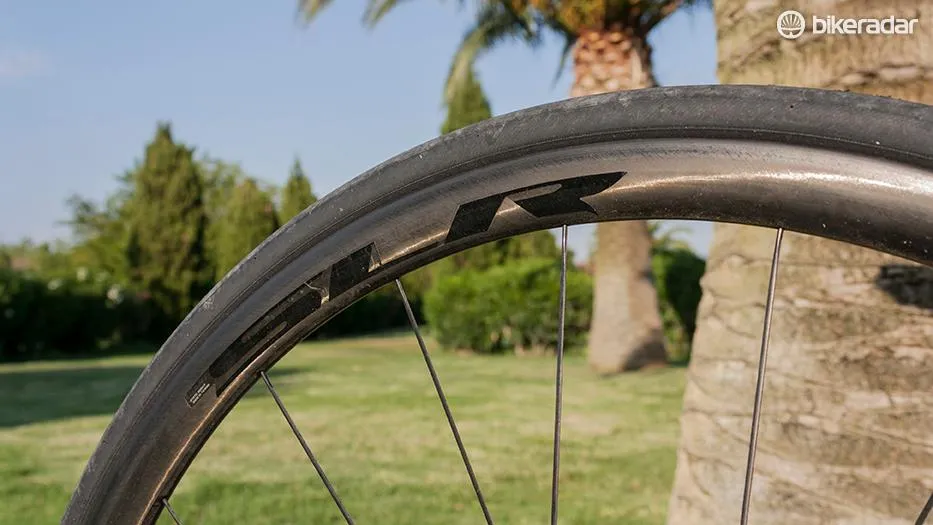
These wheels feature Giant 's DBL (Dynamic Balanced Lacing) 2:1 system, so you get 14 spokes on the drive side and 7 on the non-drive side. The aim is to get more leverage on the pulling spokes, and less on the pushing spokes. When static, the spokes varying tension levels, but when force is applied to them during riding, the tension evens out to create a wheel that offers efficient power transfer, Giant claims. Jeff Schneider, the man in charge of the wheels project, told me that Giant went through more than 50 spoke-lacing designs before they arrived at one they were happy with.
The wheels are:
- SLR 0 - ultralight full carbon wheelset, 30mm deep, claimed 1,331g a pair US$2,300
- SLR 0 Aero - full carbon aero wheelset, 55mm deep, claimed 1,535g a pair, US$2,300
- SLR 1 also carbon, 30mm deep claimed 1,425g a pair, US$1,300
- SLR 1 Aero - full carbon aero wheelset, 55m deep, claimed 1,700g a pair, US$1,300
- SL 1 - alloy l30mm deep, claimed 1,585g a pair, US$500
- SL1 - alloy/composite hybrid rim, 55m deep, alloy brake surface, claimed 1,860g a pair, US$800
Giant claim they are laterally stiffer, more efficient (in terms of deformation under load) and lighter than a wide range of wheels from brands like Zipp, Bontrager, Roval and Enve.
New saddles
Reminiscent of Fizik and its bull/snake/chameleon classification, Giant’s new range of saddles caters to three pelvic positions – forward, neutral and upright. The new saddles are called, well, Forward, Neutral and Upright and are shaped to cater to the way a rider sits and exerts pressure on the saddle.
To help riders choose what is the best for them, Giant has a test saddle with pressure-sensitive gel that shows where you are exerting the most pressure and thus which saddle style you might need. Each comes in either the US$225, 180g Contact SLR with carbon rails and base or the US$110, 210g Contact SL with a metal rails and a composite base. UK and AU pricing was not immediately available.
Saddle preference is such a personal thing but I like the ProLogo Kappa Evo and I got on really well with the Forward Contact SLR on my TCR. It was wide and supportive, but didn’t feel like I was sitting a beam, which is how I find the Fizik Arione.
